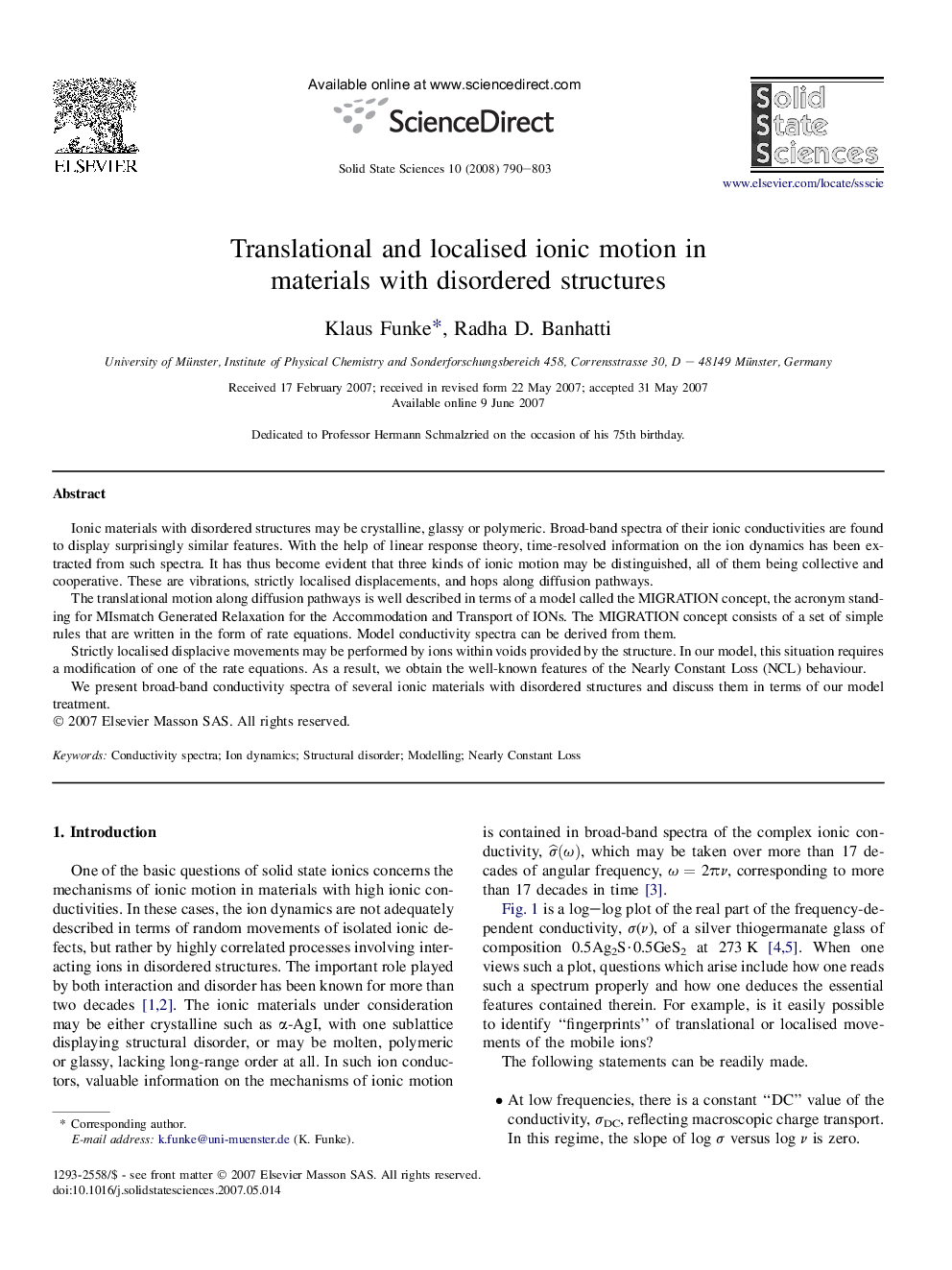| Article ID | Journal | Published Year | Pages | File Type |
|---|---|---|---|---|
| 1506292 | Solid State Sciences | 2008 | 14 Pages |
Ionic materials with disordered structures may be crystalline, glassy or polymeric. Broad-band spectra of their ionic conductivities are found to display surprisingly similar features. With the help of linear response theory, time-resolved information on the ion dynamics has been extracted from such spectra. It has thus become evident that three kinds of ionic motion may be distinguished, all of them being collective and cooperative. These are vibrations, strictly localised displacements, and hops along diffusion pathways.The translational motion along diffusion pathways is well described in terms of a model called the MIGRATION concept, the acronym standing for MIsmatch Generated Relaxation for the Accommodation and Transport of IONs. The MIGRATION concept consists of a set of simple rules that are written in the form of rate equations. Model conductivity spectra can be derived from them.Strictly localised displacive movements may be performed by ions within voids provided by the structure. In our model, this situation requires a modification of one of the rate equations. As a result, we obtain the well-known features of the Nearly Constant Loss (NCL) behaviour.We present broad-band conductivity spectra of several ionic materials with disordered structures and discuss them in terms of our model treatment.
Graphical abstractFigure optionsDownload full-size imageDownload as PowerPoint slide
